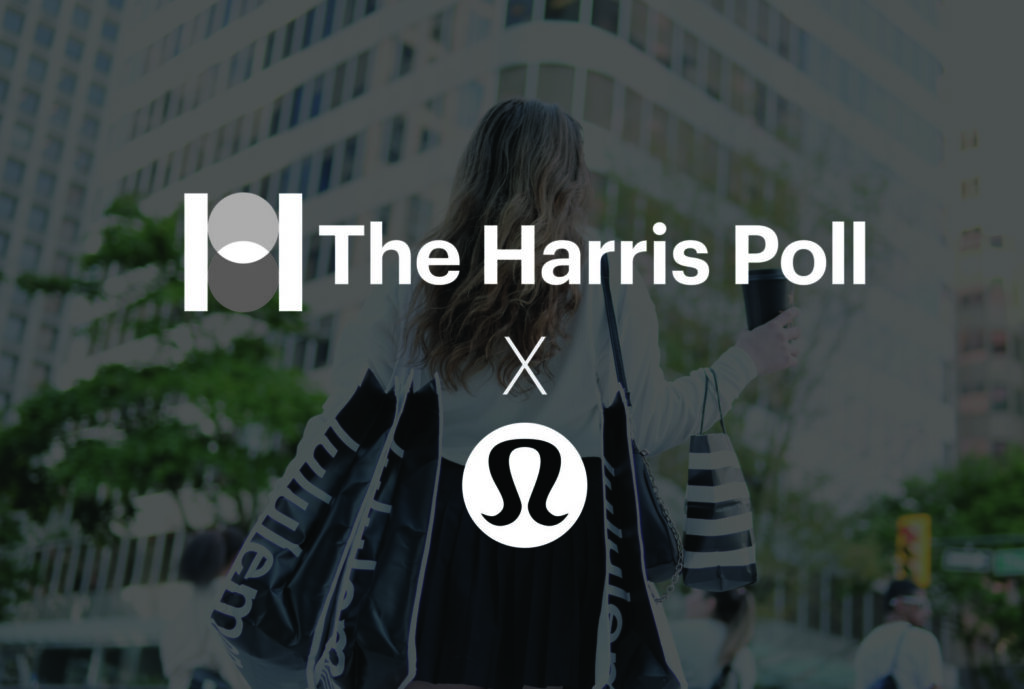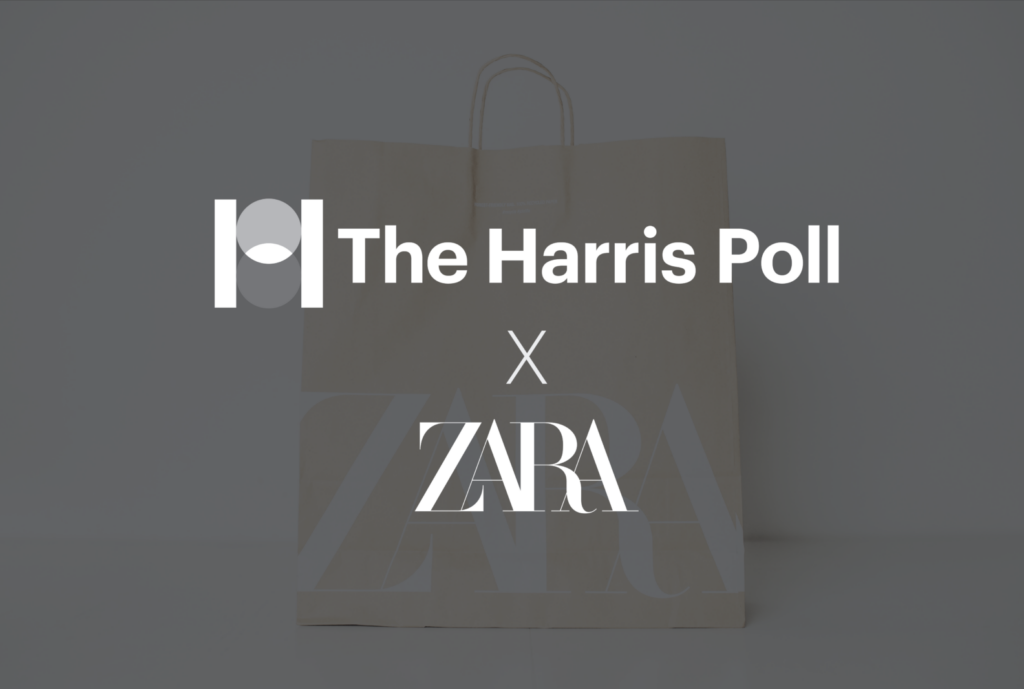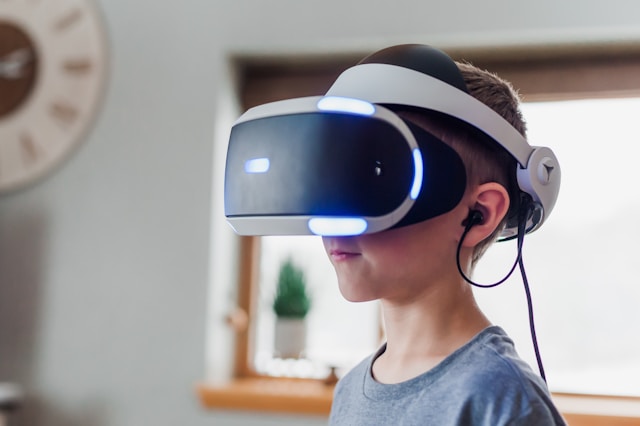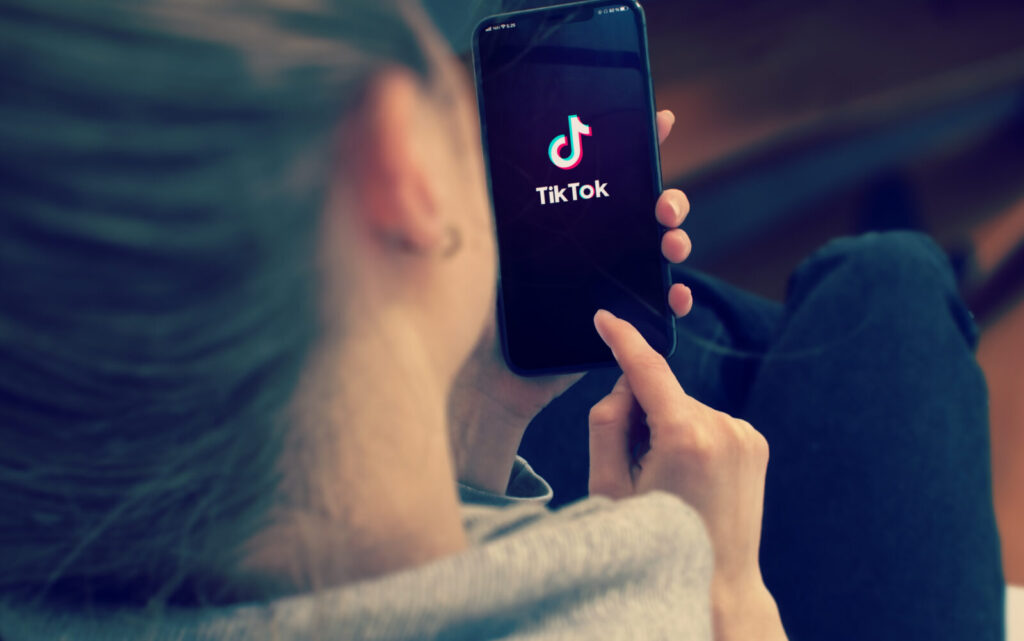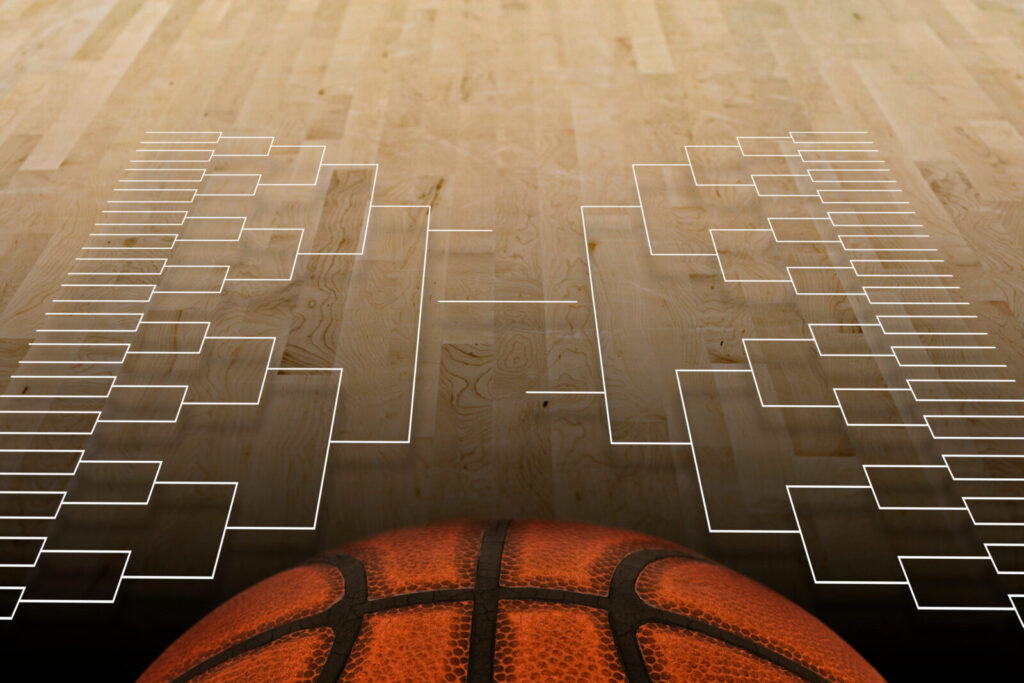Brief • 1 min Read

Access points to music are more ubiquitous than ever before, and the types of music people can listen to has never been more varied. Music and social media platforms have also blurred the lines between music consumers and creators, allowing users to both listen to and remix the music they hear.
Recent research by The Harris Poll on behalf of Rogers & Cowan and Ad Age explores how Americans consume, discover, and interact with music, artists, and their brand partners. This study also examines how music consumption compares to other forms of entertainment, such as film and television. What we have found is that Americans under 30 — often more technologically engaged and globally curious — are driving the future of trending music, music consumption, and music-influenced partnerships.
A Scaling Audience
Though a popular pastime for all, music is especially popular with young adults. Three quarters (72%) of U.S. adults listen to music. Of those, three-quarters report listening to music at least once a day.
Gen Z and Young Millennials (adults under age 30) say they listen to music even more frequently. Slightly more (76%) say they listen to music compared to all adults, and 81% listen to music at least once a day while 71% say they listen to music several times a day (compared to 77% and 62% of all adult music listeners, respectively).
Social media use appears to amplify music listenership. TikTok and Snapchat users are among the most frequent listeners. Approximately 90% of users of each platform listen to music at least once a day.
However, when compared to other forms of entertainment also experiencing expanding touchpoints and creator-consumer transformations, music consumption falls short of film and TV viewership. Compared to 72% of those who listen to music, 80% of all adults watch TV shows on television or streaming services, and 74% of all adults watch movies on television, streaming services, or in theaters.
Internet Killed the Radio Star
Americans are also changing the way they listen to music. While radios (i.e., in-car or in-home radios that do not use a CD or other device) top the list of chosen devices – 69% of music listeners use radios regularly – mobile phones are equally popular.
Among music listeners under 30, radios are even less popular with usage trailing behind mobile devices and computers. Currently, 45% listen to music using a radio (compared to 69% of all music listeners) while 80% listen to music using their mobile phones, and 53% listen to music using a computer (compared to 68% and 43% of all music listeners, respectively).
Additionally, in terms of preferred music providers, some streaming services have surpassed public radio stations, particularly among listeners under 30. YouTube’s general website (not including any of its paid services) is the most-used music provider (56% of all music listeners), followed by Spotify (40%) and public radio (34%). Just 18% of listeners under the age of 30 listen to public radio stations.
Nevertheless, nearly half (45%) of all music listeners still learn about new music (i.e., new releases or older music that is new to the listener) from public radio stations, surpassing both social media* (40%) and streaming platform recommendations (38%).
Unsurprisingly, social media plays a more important role in music discovery for Gen Z and Young Millennials. Approximately 56% learn about new music through the social platforms that they use.* Among users of fast-growing social media platforms, this increases significantly. Seventy-six percent of Twitch users, 73% of Snapchat users, and 70% of TikTok users discover new music on social media. These platforms offer an interactive, video-centric experience that makes it easy for users to create and share new music.
Given that users of these fast-growing platforms skew younger and report using several platforms, it makes sense that listeners under the age of 30 show a propensity for cross-platform discovery. For members of the music industry, this indicates that passive discovery likely plays a significant role in music adoption. Nearly half (48%) learn about new music from TV shows (e.g., songs featured in a show, shows about music) compared to 37% of all listeners; 35% learn about new music from advertisements (e.g., ads for a new release, songs featured in an ad) compared to 27% of all listeners.
Singing a New Song?
Although how people listen to music appears to be changing, the actual music most Americans enjoy tends to stay the same.
Four out of five music listeners agree that they favor music that they’ve heard before over new music (i.e., newly released music or older music that is new to the listener), with nostalgia as a suspected driver. In fact, 74% of listeners agree that they like the music that they grew up with more than both the music that came out before they were born and more than the music being released today.
On average, new releases make up less than 20% of the music that listeners choose – a significant shift from the way Americans consumer visual content.
Music listeners report that, of the music they typically listen to, 69% is music that they’ve heard before, 18% is newly released music, and 13% is older music that is new to them. Comparatively, Americans are more experimental with their visual content consumption. Newly released TV shows and movies account for well over a third of the content that viewers typically watch (38% and 40%, respectively).
Perhaps unsurprisingly, pop music remains the most popular genre of music, especially among young people.
Overall, 83% of music listeners say they enjoy listening to pop, followed by rock (78%) and R&B (69%). Adults under 30 are even bigger fans of pop (90% like it), with strong preferences for hip hop/rap (83%), and R&B (75%). Boomers+ (Baby Boomers and Silent Generation) also like pop music (73%) but show even stronger affinity for rock music (79%).
Perhaps given their more diverse make up and increased opportunities for global awareness, Gen Z and Millennials show an appreciation for world music (e.g., Latin, K-pop, Celtic) (51%) – no doubt, representing new markets on which industry players can capitalize.
Among all fans of world music, Latin (61%), Caribbean music (57%), and K-pop (44%) were the most popular genres. However, for adults under 30, K-pop (58%) outshone Latin (45%) and Caribbean music (40%) while Millennials 30+ overwhelmingly preferred Latin music (72%) to Caribbean music (60%) and K-pop (58%). Millennials 30+ also show a strong affinity for Afrobeat (44% compared to 30% of all world music fans).
Skewing younger, TikTok users show a similar interest in world music; 55% enjoy the genre. While Latin music is their favorite sub-genre (65%), K-pop remains a popular choice (57%).
This doesn’t mean older Americans aren’t experienced with non-American music though. Older generations (Gen X and above) show strong preferences for Celtic and Latin music.
“Issa vibe”
When determine the music Americans like most, favorability — to lack thereof — is rooted in feeling. “Vibe” (e.g., tempo, feeling) and relatability most commonly determine if a listener likes or dislikes a piece of music. This is unsurprising given that 85% of listeners feel that the music they listen to is a reflection of who they are.
When it comes to listeners’ favorite music, “vibe” (19%) and relatable lyrics (18%) are the most important characteristics to them.
Listeners under the age of 30 are significantly more likely to be influenced by the overall energy of a piece of music. A quarter consider the “vibe” to be the most important part of their favorite music, and another 14% favor the rhythm.
Older listeners, namely Baby Boomers and the Silent Generation, express more loyalty toward a specific artist: 30% like their favorite music because of the performer compared to16% of all music listeners.
When it comes to a listener’s least favorite music, “vibe” (20%) and un-relatable lyrics (18%) are also the most important characteristics.
Nineteen percent of all music listeners dislike their least favorite music most because the lyrics are explicit, increasing to 32% among Baby Boomers and the Silent Generation. This may explain one reason why Baby Boomers and the Silent Generation are the least likely to enjoy genres like hip hop/rap (83%), metal (76%), or alternative music (72%), which often feature explicit lyrics.
Dropping the Bass (Age)
Music trends appears to start with young people as interest in discovering new music appears to fall as people age. Overall, 62% of music listeners agree that they like finding undiscovered music. This jumps to 79% among listeners under the age of 30 while falling to 45% among Baby Boomers and the Silent Generation.
Adults under 30 report more often than their older counterparts that they keep a finger on the pulse of the music industry. As such, they’re often the first to find up-and-coming artists.
Compared to 28% of all music listeners, 40% of listeners under the age of 30 turn to industry experts like artists, record studios and trade publications to learn about new music.
Over a third of those under 30 (35%) use at least one of the three most popular streaming platforms for independent artists — SoundCloud, Bandcamp, or TIDAL — nearly double the number of all music listeners (18%).
Their connection to the industry, combined with their lack of affinity for any one artist or genre, means that younger listeners are equally quick to move on from an artist that they feel is played out. Half even say they stop listening to music once it becomes too popular.
High Key Engagement
Young adults are well known for the amount of time they spend on social media. The growing popularity of youth-focused social media apps like Snapchat and TikTok helps to explain why, as mentioned earlier, social media use is highly correlated with music listenership. TikTok and Snapchat users are ardent music fans that embrace popular music. They also embrace diverse and alternative forms of music at higher rates than the typical music listener – revealing a set of early music adopters.
TikTok and Snapchat users are the most frequent music listeners, enjoying music at least once a day (91% and 92%, respectively compared to 77% for all music listeners).
They also ensure popular music remains a trendy genre. Nearly all TikTok and Snapchat users enjoy listening to pop music (93% and 91%, respectively) – but they’re also more open to music that’s popular. While 54% of music listeners agree that they dislike the music that’s popular today, only 40% of both TikTok and Snapchat users feel the same way.
Additionally, TikTok and Snapchat users are also fans of music genres that are less mainstream or derived from non-White ethnic groups. They especially over-index on favoring R&B (82% for both compared to 69% of all music listeners), hip hop/rap (80% and 81%, respectively vs. 56% of all music listeners), alternative music (67% and 68% vs. 51%), world music (55% and 59% vs. 40%), and jazz (55% and 58% vs. 50%).
Within international music specifically, TikTok and Snapchat users most over-index on favoring K-pop (57% and 54%, respectively vs. 44% of all music listeners) and Afrobeat (41% and 37% vs. 30%). Such trends were also common among other social media usage groups that skew younger, including users of Twitch, Reddit, and Twitter.
Commercial Harmony
Music gives brands another avenue to connect with consumers. In fact, music listeners favor brand partnerships with musicians significantly more than partnerships with other celebrities or influencers.
Nearly two in five listeners (37%) say they are likely to purchase from a brand that partners with a musician that they like. Only 24% say they are likely to purchase from a brand that partners with a non-musical personality that they like.
Especially among younger music fans, brands that seek to support music-related initiatives appeal to many. Nearly half (46%) of music listeners under 30 say they are more likely to shop with or use a brand if the brand supports social initiatives related to music like donating to local music venues or creating scholarships for up-and-coming musicians.
It seems some brands have already realized this trend. Not only did luxury jewelry brand Tiffany & Co. partner with musicians Beyoncé and JAY-Z in July, but the brand also pledged $2 million to support the artists’ ABOUT LOVE scholarship program for students in the arts and creative fields at Historically Black Colleges and Universities (HBCUs).
To target music listeners, advertising channel is key. This becomes especially clear when comparing music to other forms of entertainment.
Compared to TV and film viewers, music listeners follow the industry closely, increasing the points of contact between brand and consumer. A quarter of music listeners (23%) learn about new releases directly from creators (e.g., musicians, record labels). Only 15% of film viewers and 12% of TV viewers learn about upcoming content from industry creators (e.g., actors, production studios).
Successful communication channels to reach music listeners are even more important since ads on music services (e.g., streaming platforms, radio) may reach a limited audience. More than half of music listeners (55%), and 69% of listeners under the age of 30, are willing to pay a premium to listen to music without ads.
Depending on a brand’s target audience, though, emphasizing music in advertising is still worthwhile. For example, nearly 60% of users across some of the fastest-growing social media platforms — such as Twitch, TikTok, and Snapchat — say they are more likely to shop with or use a brand that features a song they like in its advertisements.
Learn the 3 ways brands can connect with the next generation of music fans
Final Notes
Today’s music fans under the age of 30 are already controlling music discovery and consumption. Their preferred platforms, social media and streaming services, guide their conversation of what songs and genres are trendy. Expanding access to global talent and increasing ethnic diversity has boosted the presence of world music and minority-derived genres. More focused on the quality of their experience, music has also become a paid priority for this group. Ultimately, what this means is that the music listening experience has become more active, social, intimate, and direct than ever before.
For brands to authentically connect with connect with young Americans through music, they will need to tap into popular discovery access points, partners with artists, and support music-influenced social initiatives.
Research Notes
*Measured among music listeners who use social media
Methodology
This study was conducted online within the United States by The Harris Poll on behalf of Rogers & Cowan PMK and Ad Age during October 1-7, 2021, among 1,639 U.S. adults aged 18 and older. This online survey is not based on a probability sample and therefore no estimate of theoretical sampling error can be calculated. Figures for age, sex, race/ethnicity, education, region and household income were weighted where necessary to bring them into line with their actual proportions in the population. Propensity score weighting was used to adjust for respondents’ propensity to be online. For more information, please contact Dami Rosanwo or Madelyn Franz.
Subscribe for more Insights
Subscribe to our newsletter for the latest trends in business, politics, culture, and more.
Download the Data
Get the full data tabs for this survey conducted online within the United States by The Harris Poll on behalf of Rogers & Cowan PMK and Ad Age between October 1-7, 2020, among 1,639 U.S. adults ages 18 and older.
Download
Subscribe for more Insights
Subscribe to our newsletter for the latest trends in business, politics, culture, and more.
Download the Data
Get the full data tabs for this survey conducted online within the United States by The Harris Poll on behalf of Rogers & Cowan PMK and Ad Age between October 1-7, 2020, among 1,639 U.S. adults ages 18 and older.
DownloadRelated Content
